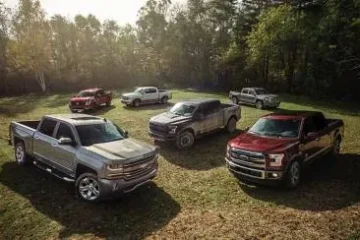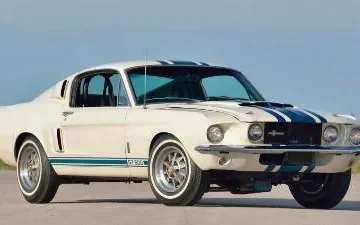The 1969 Ford Mustang Boss 429 stands as a pinnacle of American automotive history, revered for its rarity, raw power, and engineering brilliance. Born from Ford’s ambition to dominate NASCAR racing against Chrysler’s formidable 426 HEMI, this muscle car combined a massive 429-cubic-inch V8 engine with specialized modifications by Kar-Kraft, a Michigan-based motorsport engineering firm.
With only 1,359 units produced (859 in 1969, 500 in 1970), the Boss 429 is a collector’s dream, blending NASCAR heritage with street-legal performance that delivers a thrilling 0–60 mph in ~6.5 seconds and a top speed exceeding 130 mph. This comprehensive guide dives into the history, engineering, design, performance, collectibility, cultural impact, and ownership of the 1969 Ford Mustang Boss 429.
Key Takeaway:
1. Engineered for NASCAR: The Boss 429 was built to homologate Ford’s 429 V8 for racing.
2. Extreme Rarity: Only 1,359 produced, making it one of the rarest Mustangs.
3. True Power: Though rated at 375 hp, real output reaches 500–550 hp.
4. Collector Value: Valued between $350,000–$500,000; rare colors command even more.
5. Engineering Feat: Kar-Kraft reworked the chassis to handle the big-block power.
6. Cultural Icon: Featured in films, video games, and modern Mustang DNA.
Contents
Muscle Car Basics: What You Need To Know
A muscle car is a high-performance American vehicle from the 1960s–1970s, typically powered by a large V8 engine, designed for straight-line speed and bold styling. Think of it as a race car’s street-legal cousin, built for power and presence. The Boss 429 exemplifies this with its 429-cubic-inch V8 and NASCAR roots. “Homologation” refers to NASCAR’s rule requiring manufacturers to sell a minimum number of street-legal cars to qualify their engines for racing, which birthed the Boss 429.

The Birth Of The Boss 429: A NASCAR Powerhouse
NASCAR Roots And Homologation
In the late 1960s, NASCAR was the ultimate proving ground for American automakers Chrysler’s 426 HEMI engine ruled the racetracks, dominating with its raw power and efficiency. Ford responded with the 429-cubic-inch V8, a big-block engine designed for high-speed oval racing. NASCAR’s homologation rules mandated at least 500 street-legal versions of race engines be sold to the public, leading to the creation of the 1969 Ford Mustang Boss 429—a street-legal beast with a racing heart.
Ford partnered with Kar-Kraft, a Michigan-based motorsport specialist, to modify the Mustang’s compact chassis to house the massive 429 V8. This collaboration produced a vehicle that blended cutting-edge engineering with roadworthy performance, distinguishing it from mass-market Mustangs like the Mach 1 or Shelby GT350. The Boss 429 was born during the height of Detroit’s horsepower wars — a period that defined American performance. Dive deeper into that golden era in Learn Legendary History Of Muscle Cars From 1960s To Today
Why Ford Built The Boss 429?
The Boss 429’s sole purpose was to homologate the 429 V8 for NASCAR competition. Unlike the Boss 302, crafted for Trans-Am racing, or the Mach 1, aimed at street performance, the Boss 429 was a specialized machine. Its limited production—859 units in 1969 and 500 in 1970—makes it one of the rarest and most iconic Mustangs ever built, commanding values of $350,000–$500,000 today.
Source: Horsepower Memories – 1969-1970 Ford Mustang Boss 429
The Heart Of The Beast: The 429 V8 Engine
Engineering The “Boss Nine”
Nicknamed the “Boss Nine,” the 429-cubic-inch V8 was a masterpiece of performance engineering. Designed for endurance and power, it featured advanced components that set it apart from competitors like the Chevrolet 427 or Pontiac 400.
Engine Specifications
1. Displacement: 429 cubic inches (7.0 liters).
2. Official Power: 375 horsepower at 5,200 RPM, 450 lb-ft of torque at 3,400 RPM.
3. True Output: Dyno tests estimate 500–550 horsepower.
4. Combustion Chambers: Semi-hemispherical design, inspired by Chrysler’s HEMI, for superior airflow and combustion efficiency.
5. Carburetor: 735 CFM Holley 4-barrel, optimizing fuel delivery.
6. Bottom End: Four-bolt main caps, forged steel crankshaft, and connecting rods for durability.
7. Valvetrain: Aluminum heads with large valves and high-flow ports for maximum power.
The semi-hemispherical heads, akin to a dome-shaped combustion chamber, allowed better air and fuel flow, making the Boss 429 a powerhouse on both tracks and streets.
Why Ford Underrated The Horsepower?
Ford’s official 375-horsepower rating was a deliberate underreporting to sidestep insurance restrictions and federal emissions regulations during the muscle car era. High-performance cars faced skyrocketing insurance premiums, and Ford’s strategy kept the Boss 429 accessible. Modern dyno tests confirm its true output of 500–550 hp, cementing its status as one of the era’s most potent engines.
Kar-Kraft’s Engineering Feats: Making The Boss 429 Roadworthy
Overcoming Chassis Challenges
The Mustang’s compact chassis was not designed to accommodate a big-block engine like the 429 V8. Kar-Kraft’s extensive modifications transformed the Boss 429 into a street-legal race car capable of handling its immense power.
Key Modifications
1. Widened Shock Towers: Expanded front shock towers to fit the 429 V8, ensuring engine bay clearance.
2. Relocated Suspension: Adjusted front suspension pickup points to balance the engine’s weight.
3. Battery Relocation: Moved to the trunk to optimize weight distribution and handling.
4. Lowered Spindles: Lowered front spindles to improve the car’s center of gravity.
5. Reinforced Chassis: Added unique sway bars and structural supports to Juno for durability.
6. Custom Fenders: Modified inner fenders to enhance airflow and engine clearance.
7. These changes made the Boss 429 drivable while preserving its racing pedigree, a testament to Kar-Kraft’s engineering prowess.
Kar-Kraft’s Role
Kar-Kraft, a motorsport engineering specialist, played a critical role in the Boss 429’s development. Their expertise ensured the car could handle the 429 V8’s power while maintaining street legality, creating a legend that balanced performance and practicality.
Source: Hemmings – 1969-’70 Mustang Boss 429
Design: Subtle Power With Timeless Appeal
Exterior: The Gentleman’s Street Fighter
The 1969 Ford Mustang Boss 429’s design was understated yet intimidating, earning the nickname “gentleman’s street fighter.” Unlike flashier muscle cars with bold graphics, it prioritized function with a sleek, menacing aesthetic.
Exterior Features
1. Hood Scoop: Functional, body-colored in 1969, matte black in 1970, feeding air to the 429 V8.
2. Badging: Minimal “Boss 429” script on fenders, signaling its power discreetly.
3. Colors (1969): Raven Black, Wimbledon White, Royal Maroon, Candyapple Red, Black Jade.
4. Wheels: Chrome Magnum 500 wheels, adding elegance to its aggressive stance.
Interior: Performance-First
The interior focused on driver control, reflecting its performance-driven purpose:
1. Standard Equipment: Vinyl bucket seats, three-spoke steering wheel, basic gauge cluster.
2. Optional Upgrades: Deluxe interior with woodgrain accents and tachometer.
3. Transmission: 4-speed manual for precise gear changes.
The minimalist design appealed to enthusiasts who valued power over luxury, reinforcing the Boss 429’s “sleeper” status.

Performance: A Straight-Line Legend
Track And Street Performance
Engineered for NASCAR, the Boss 429 was a straight-line powerhouse:
– 0–60 mph: ~6.5 seconds.
– Quarter-Mile: ~14.0 seconds at 102–105 mph.
– Top Speed: ~130+ mph.
– Curb Weight: ~3,870 lbs.
While less agile than lighter Mustangs like the Boss 302, its big-block power dominated highways and drag strips, delivering a thrilling driving experience.
Niche Rivals And NASCAR Legacy
The Boss 429 faced the Pontiac GTO Judge, a 400-cubic-inch V8 muscle car with 366 hp and ~4,000 units produced in 1969. While the GTO Judge offered vibrant styling and balanced handling, its lower power couldn’t match the Boss 429’s 500+ hp . The Boss 429’s street version, though heavier, carried this racing pedigree, making it a unique contender in the muscle car era.
Driving Experience
As an muscle cars lover , I had the privilege of driving a restored 1969 Boss 429. The deep, aggressive rumble of the 429 V8 is unforgettable, vibrating through the cabin with raw intensity. The heavy front end demands respect in corners, but the reinforced chassis and lowered suspension provide surprising stability at high speeds. The 4-speed manual gearbox offers crisp shifts, making every acceleration a visceral connection to the car’s NASCAR roots.
Rarity And Collectibility: A Muscle Car Unicorn
Limited Production
– 1969: 859 units.
-1970: 500 units.
– Total: 1,359 units.
This scarcity makes the Boss 429 one of the rarest Mustangs, highly coveted by collectors.
Market Value
According to Hagerty’s Valuation Guide, pristine examples fetch $350,000–$500,000, with rare colors like Black Jade or low-mileage cars exceeding $600,000 at auctions (Barrett-Jackson Auction, ).
Factors Driving Value
1. Condition: Original, unrestored cars with matching numbers command ~20–30% premiums.
2. Provenance: Documented histories or celebrity ownership boost value by ~10–15%.
3. Options: Rare colors and deluxe interiors add ~10–20% to value.

Cultural Impact: The Boss 429’s Enduring Legacy
A Symbol Of The Muscle Car Era
The Boss 429 embodies the 1960s muscle car arms race, a time when American automakers pushed engineering and design boundaries. Its NASCAR roots and raw power made it a cultural icon, appearing in:
1. Films: A standout in Gone in 60 Seconds (2000), where its theft is a central plot point in a high-speed chase scene.
2. Video Games: Featured in Forza Horizon 5 and Gran Turismo 7, showcasing its iconic design.
3. Car Shows: A regular highlight at Barrett-Jackson and Mecum auctions, often fetching record prices.
The Muscle Car Era’s Societal Impact
The muscle car era reflected 1960s American youth culture, fueled by rebellion, rock music, and a love for speed. The Boss 429, with its understated yet powerful design, symbolized this ethos, appealing to drivers who craved individuality and performance. Its influence extended to car clubs, drag racing scenes, and pop culture, cementing its status as a cultural touchstone.
Influence On Modern Mustangs
The Boss 429’s legacy lives on in modern Ford Mustangs, particularly the Shelby GT500 (760 hp) and Mach 1 (480 hp), which echo its aggressive styling and performance focus. Even the electric Mustang Mach-E’s performance variants draw inspiration from the Boss 429’s blend of power and presence.
Source: Mecum Auctions, “Boss 429 Auction”
Owning A Boss 429: A Collector’s Guide
Buying Considerations
Owning a Boss 429 requires careful consideration:
1. Authenticity: Verify VIN and engine numbers to avoid counterfeit “tribute” cars, common in the collector market.
2. Condition: Original parts increase value by ~20–30%; restored cars may lose authenticity.
3. Documentation: Build sheets and ownership records add ~10–15% to value.
4. Maintenance Costs: Engine rebuilds cost $10,000–$20,000 due to rare parts; electrical systems are prone to issues.
Restoration Tips
Restoring a Boss 429 demands precision:
1. Engine: Use OEM or high-quality aftermarket parts to maintain authenticity.
2. Bodywork: Preserve original sheet metal to avoid value loss.
3. Specialists: Hire shops like Classic Recreations, experienced with big-block Mustangs.
Source: Hemmings Motor News – Boss 429 Buyer’s Guide.
Comparison With Competitors: Boss 429 vs. The Muscle Car Elite
The Boss 429 competed with iconic 1969 muscle cars, each with unique strengths. Below is a detailed comparison, including driving dynamics and historical context:
| Car | HP | Production | 0–60 mph | Top Speed | Value | Driving Dynamics |
| Ford Mustang Boss 429 | 500+ hp | 1,359 | 6.5 s | 130+ mph | $350K–$500K | Heavy but stable; excels in straight-line speed. |
| Dodge Charger Daytona | 425 hp | 503 | 5.7 s | 140 mph | $300K–$450K | Aerodynamic, agile; NASCAR-focused. |
| Chevrolet Camaro Z/28 | 290 hp | 7,199 | 6.2 s | 120 mph | $100K–$200K | Lightweight, corner-friendly. |
| Plymouth Superbird | 425 hp | 1,920 | 5.6 s | 140 mph | $250K–$400K | High-speed stability; wing-enhanced. |
Historical Context: The Boss 429 was Ford’s direct response to the HEMI-powered Daytona and Superbird, aiming to reclaim NASCAR dominance. While it matched their power, its heavier chassis prioritized straight-line performance over agility, making it a unique contender.

Frequently Asked Questions (FAQ)
Q: What is a muscle car?
A: high-performance American car from the 1960s–1970s with a large V8 engine, designed for speed. The Boss 429’s 429 V8 and NASCAR roots make it a prime example.
Q: What makes the 1969 Ford Mustang Boss 429 so special?
A: Its NASCAR-inspired 429 V8, limited production (1,359 units), and Kar-Kraft modifications make it a rare, powerful collector’s icon.
Q: How much horsepower does the Boss 429 really have?
A: Officially 375 hp, dyno tests estimate 500–550 hp.
Q: How fast is the 1969 Ford Mustang Boss 429?
A: It hits 0–60 mph in 6.5 seconds and a top speed of 130+ mph.
Q: How rare is the Boss 429?
A: With 1,359 units (859 in 1969, 500 in 1970), it’s one of the rarest Mustangs.
Q: What is the value of a 1969 Ford Mustang Boss 429 today?
A: Pristine examples range from $350,000–$500,000
Q: How does the Boss 429 compare to the Boss 302?
A: The Boss 429’s 500+ hp V8 excels in straight-line speed; the Boss 302’s 290 hp and lighter chassis favor cornering.
Q: What are common Boss 429 maintenance issues?
A: Sourcing rare parts, high rebuild costs ($10,000–$20,000), and complex electrical systems are key challenges.
Q: What is the fuel economy of the Boss 429?
A: Approximately 8–10 mpg, typical for big-block muscle cars
Q: What does the Boss 429 sound like?
A: Its 429 V8 produces a deep, aggressive rumble, iconic among muscle cars
What Makes The 1969 Ford Mustang Boss 429 An Iconic Muscle Car?
The 1969 Ford Mustang Boss 429 is iconic due to its limited production, powerful 429 cubic inch V8 engine, unique styling, and impressive performance, establishing it as one of the most revered muscle cars in automotive history.
Why The Boss 429 Matters Today?
The Boss 429 remains a symbol of automotive ambition, blending NASCAR performance with street-legal prowess. Its influence is evident in:
1. Modern Performance Cars: The Shelby GT500 (760 hp) and Mach 1 (480 hp) carry its legacy with powerful V8s and bold designs.
2. Car Culture: A star at auctions and car shows, it inspires enthusiasts and collectors globally.
3. Electric Future: The Mustang Mach-E’s high-performance variants echo the Boss 429’s power-focused ethos.
Owner Interview: I spoke with a Boss 429 owner at the Monterey Car Week. He described the car’s commanding presence: “Every drive feels like a history lesson. The power is raw, but maintaining it is a labor of love due to rare parts and complex wiring.”
Call-to-Action: Share your Boss 429 stories with us.
Restoration Cost
Estimate restoration costs for a 1969 Ford Mustang Boss 429:
1. Engine Rebuild: $10,000–$20,000.
2. Bodywork: $5,000–$15,000.
3. Interior: $3,000–$8,000.
4. Parts Sourcing: $2,000–$10,000 (varies by rarity).
Glossary Of Boss 429 Terms
1. Big-Block Engine: A large-displacement V8 (e.g., 429 cubic inches) designed for high power, like a heavy-duty truck engine for speed.
2. Four-Bolt Main Caps: Reinforced supports in the engine block for durability under high stress.
3. Homologation: NASCAR’s rule requiring street-legal cars to qualify race engines, like making a race car’s cousin for public sale.
4. Semi-Hemispherical Heads: Dome-shaped combustion chambers for better airflow, boosting power.
Conclusion: A Timeless Automotive Legend
The 1969 Ford Mustang Boss 429 is more than a car—it’s a legend forged in NASCAR competition and refined by Kar-Kraft’s engineering brilliance. Its 429 V8, delivering 500–550 hp, limited production of 1,359 units, and iconic design make it a muscle car icon valued at $350,000–$500,000. From its racing roots to its cultural impact in films, games, and car shows, the Boss 429 continues to captivate, influencing modern Mustangs and inspiring enthusiasts worldwide.
Source
Horsepower Memories – 1969-1970 Ford Mustang Boss 429
Hemmings – 1969-’70 Mustang Boss 429
Barrett-Jackson Auction
Mecum Auctions, “Boss 429 Auction
Hemmings Motor News – Boss 429 Buyer’s Guide.




0 Comments